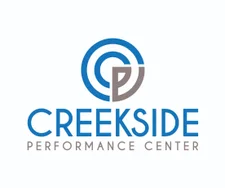At the Creekside Chiropractic & Performance Center, we always strive to provide the latest effective treatments. We are excited to announce that dry needling can now be performed in office by Dr. Tislau, Dr. Kornetzke, and Dr. Petersen.
What is Dry Needling?
Dry needling is defined as a “skilled intervention using a thin needle (typically 0.3 mm) to penetrate the skin that stimulates myofascial (muscle) trigger points, muscles, and connective tissue for the treatment of musculoskeletal pain disorders” (1).
Is Dry Needling Safe?
While the name of the procedure may sound intimidating, dry needling is safe, minimally discomforting and often an effective technique for patients with many musculoskeletal presentations. Clean dry needling techniques are used at Creekside Chiropractic & Performance Center, meaning that only single use pre-sterilized needles are used and never re-inserted.
How does it work?
Dry needling affects the body by reducing pain signaling at the area of irritation, increasing blood flow and oxygen to the area, increasing healing cellular chemical concentrations, and reducing trigger point sensitivity. Dry needling also affects how your brain receives signals from the body, which can help down-regulate pain signaling at the spinal cord and brain level.
What is a trigger point?
A trigger point is a local contracture or tight band in a muscle fiber that can disrupt function, restrict range of motion, refer pain or cause local tenderness. When dry needling is applied to a dysfunctional muscle or trigger point, it can decrease banding or tightness, increase blood flow, and reduce local and referred pain.
What is the difference between acupuncture and dry needling?
It’s important to note dry needling is not the same as acupuncture. It uses similar tools, but that’s where the similarities end. Dry needling is performed by different practitioners with different training. Acupuncture is based on Eastern medicine and focuses on balancing out energy known as Qi, while dry needling is rooted in Western medicine and evaluation of pain patterns, posture, movement impairments, function and orthopedic tests.
Do you use electricity with the needles?
By utilizing electrical stimulation attached to the needles, we are able to amplify the effects of the dry needling treatment up to 10 times. Small clips attach to the needle base and sends an electrical pulse through the needle. This is left on anywhere from 1-15 minutes.
What are Dry Needling treatment goals?
Dry needling generally treats muscle, tendon, or ligament tissue and its goal is to reduce pain, inactivate trigger points and restore function. It rarely is a standalone procedure. Rather, it often is part of a broader approach incorporating other interventions into treatment including chiropractic, myofascial release, rehabilitative exercise, etc.
Can I just do dry needling?
Of course, you can get dry needling only, however the current literature suggests using it as an adjunctive tool (combined with other services) to improve it's effects.
Can dry needling help with my pain?
Dry needling can be used for a wide variety of musculoskeletal issues. We commonly use it for conditions such as shoulder pain, neck pain, heel pain, hip pain, jaw pain, and lower back pain. While research indicates dry needling is a safe and effective approach for treating and managing pain, insurance companies may not reimburse for the procedure at this time.
What does it feel like?
Patients may note a slight pinch when the needle is being inserted, sometimes not. Once the needle hits "the spot" they may notice some slight discomfort, but it is often described as "a good pain". While the treatment is going on, it is typically rather relaxing. If electricity is added, you may notice your muscle twitching to the pulse of the electricity. A dull ache is often reported during and immediately after treatment. This is normal and actually a good sign that treatment will be effective. The ache may last a few hours or a day or two. Typically as the ache subsides, the pain in the area treated also subsides.
Sources:
1. American Physical Therapy Association (APTA) Description of Dry Needling in Clinical Practice: An EducAtional Resource Paper.APTA; Alexandria, VA, USA: 2013. [Google Scholar] [Ref list]
2.Navarro-Santana MJ, Sanchez-Infante J, Fernández-de-Las-Peñas C, Cleland JA, Martín-Casas P, Plaza-Manzano G. Effectiveness of Dry Needling for Myofascial Trigger Points Associated with Neck Pain Symptoms: An Updated Systematic Review and Meta-Analysis. J Clin Med. 2020;9(10):3300. Published 2020 Oct 14. doi:10.3390/jcm9103300
3. High prevalence of shoulder girdle muscles with myofascial trigger points in patients with shoulder pain. Bron C, Dommerholt J, Stegenga B, Wensing M, Oostendorp RA. BMC Musculoskelet Disord. 2011 Jun 28; 12():139. [PubMed] [Ref list]
4. Electrical dry needling as an adjunct to exercise, manual therapy and ultrasound for plantar fasciitis: A multi-center randomized clinical trial. Dunning Et. al. 2018 Oct 31. doi: 10.1371/journal.pone.0205405

